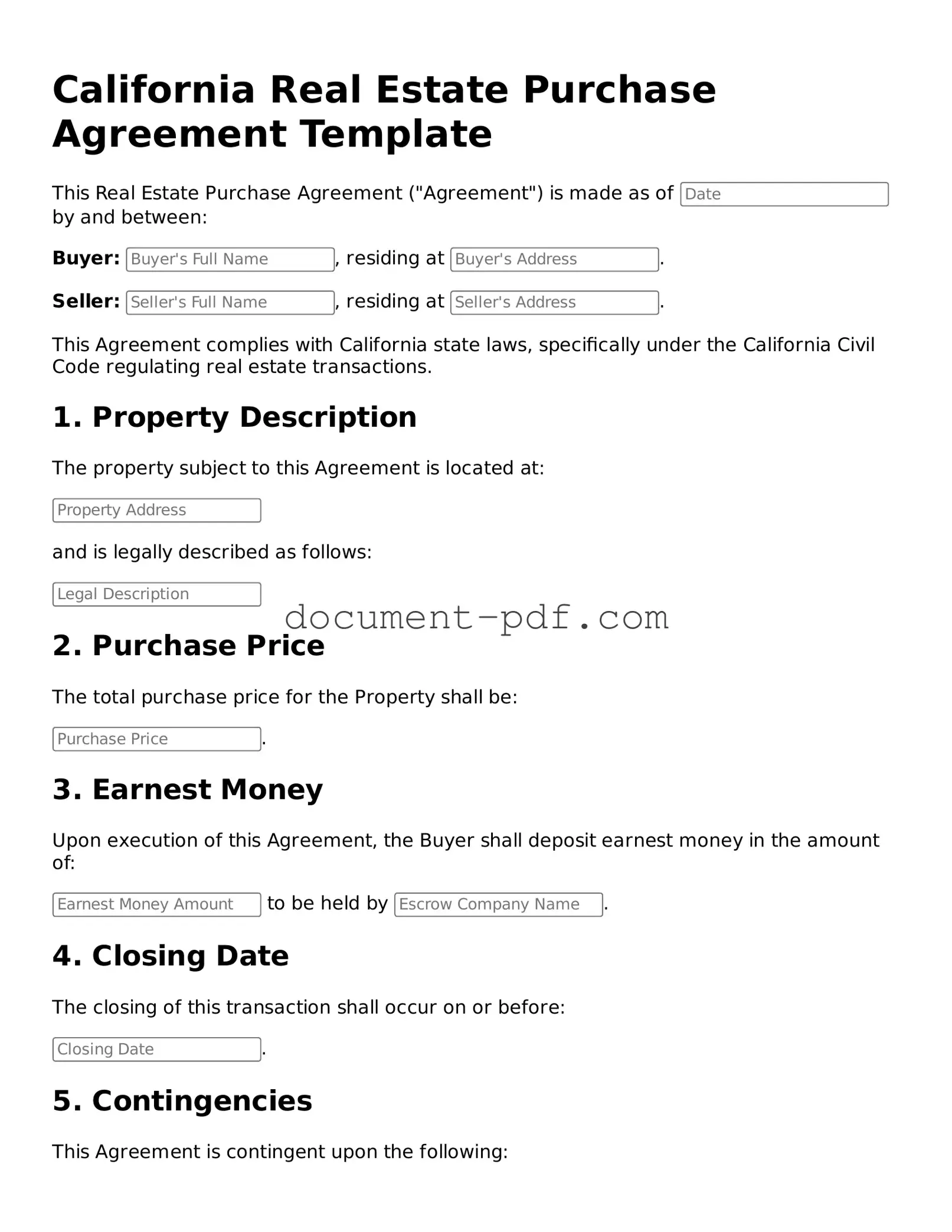Attorney-Verified California Real Estate Purchase Agreement Template
The California Real Estate Purchase Agreement is a legal document used to outline the terms and conditions of a property sale in California. This form serves as a binding contract between the buyer and seller, detailing important aspects such as the purchase price, contingencies, and closing date. Understanding this agreement is crucial for a smooth transaction, so be sure to fill it out correctly by clicking the button below.
Access Real Estate Purchase Agreement Editor Here
